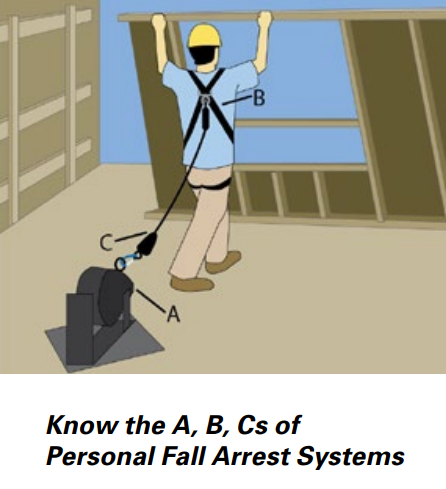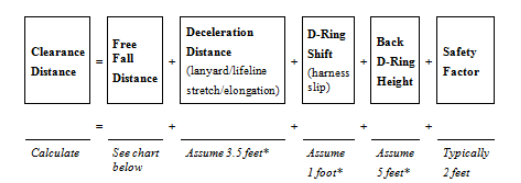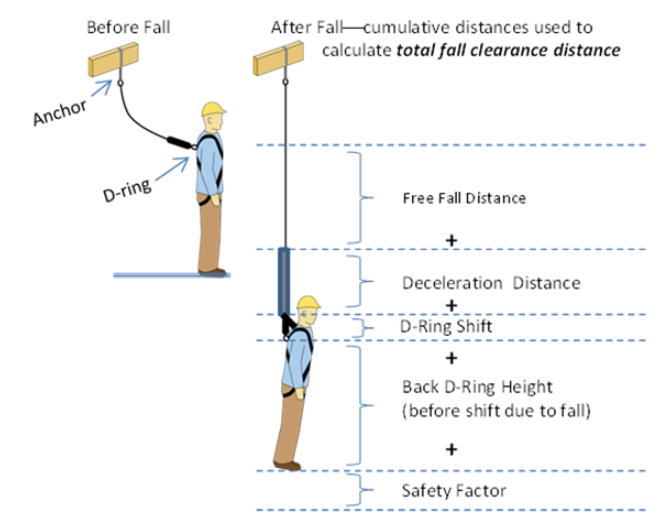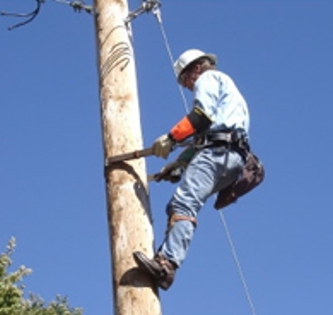
Source of Images: OSHA
*Press Play Below to Begin Audio*
Fall Hazard Controls Continued
Know the A, B, Cs of Personal Fall Arrest Systems
- Anchorages
- Body harness
- Components (connectors like snaphooks or Dee-rings, connection points, lanyards, deceleration devices, lifelines, etc.)
Personal Fall Arrest System (PFAS)
A system used to safely stop (arrest) a worker who is falling from a working level. It consists of an anchorage, connectors, and a body harness. It also may include a lanyard, deceleration device, lifeline, or suitable combinations of these.
Anchorage Connectors
Designed as the intermediary for securing a connecting device to an anchorage. The anchorage should be easily accessible, located at a safe distance and support 5,000 lbs. per worker. For areas with predictable and repetitive use, permanent anchors may be installed.

Source of Images: OSHA
Calculating Total Fall Clearance Distance for Fall Arrest Systems with a Shock-absorbing Lanyard


Source of Images: OSHA
Control the Fall
Positioning Devices
A position-device system enables the worker to work with both hands free on a surface such as a wall or other vertical structure. They are typically used as protection for concrete form work and placing rebar. The difference between a positioning-device system and a personal fall-arrest system is that the positioning device system supports the worker on an elevated surface and limits a fall to two feet.

Source of Images: OSHA
- Consists of specially designed mesh nets, panels, and connecting components
- Must be designed, installed and maintained properly

Source of Images: OSHA
